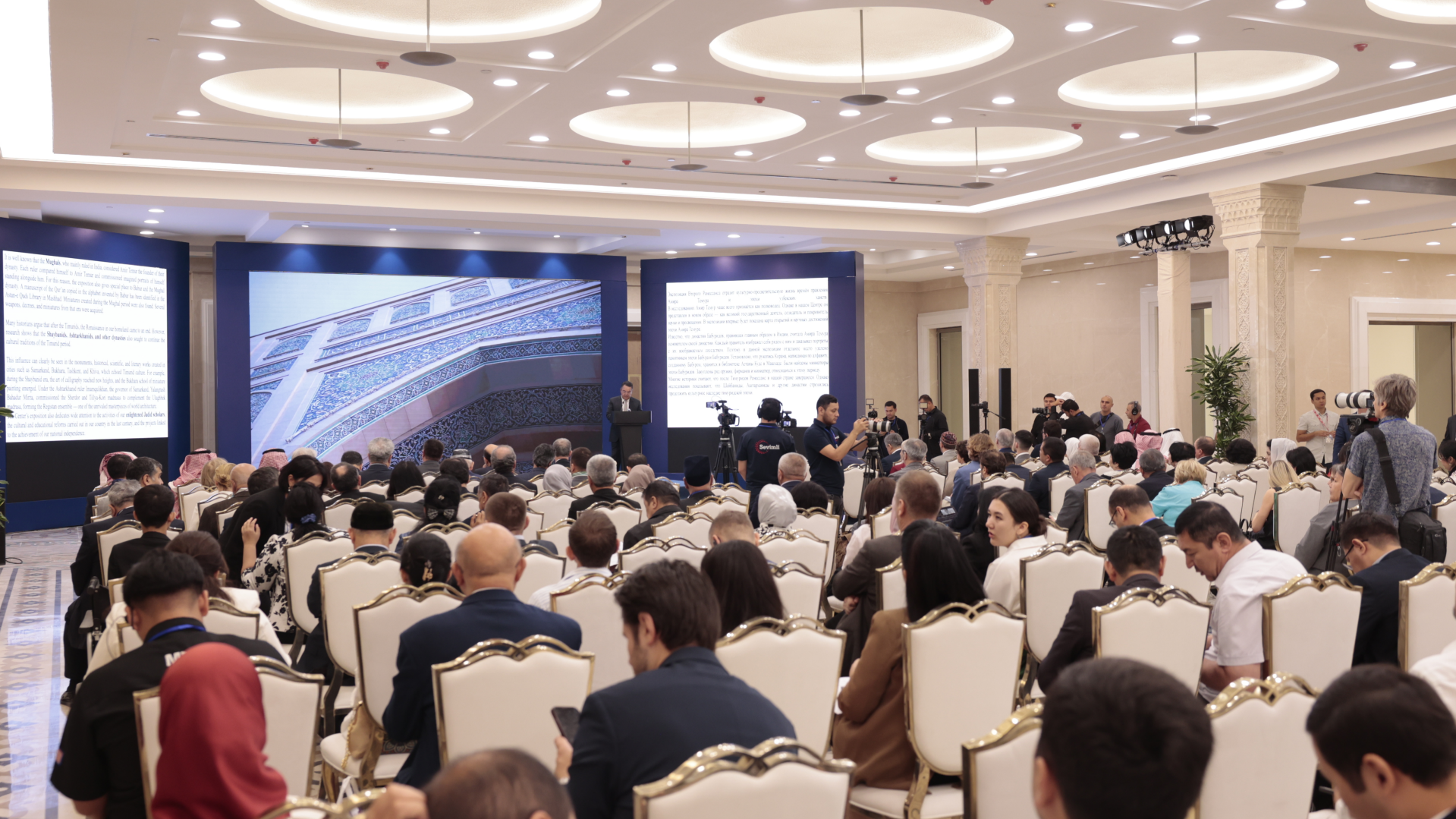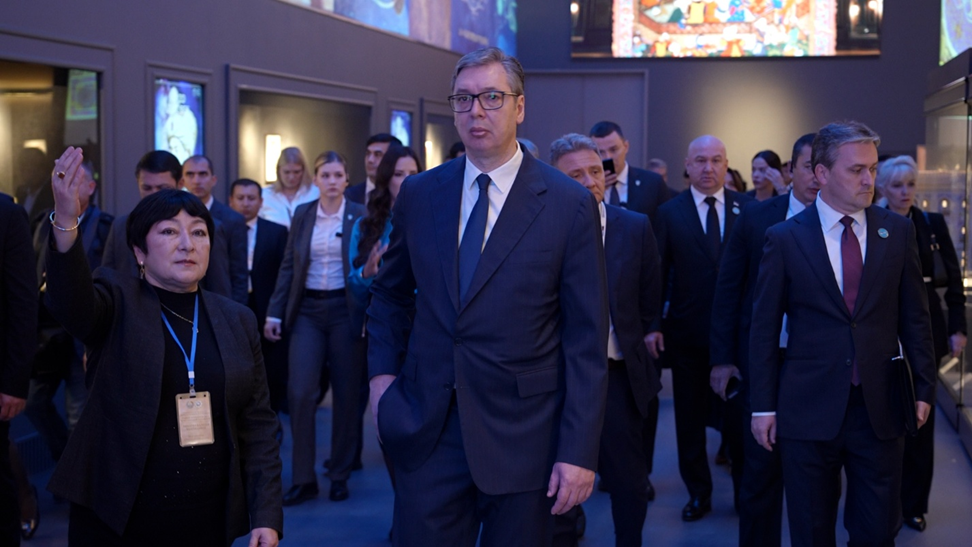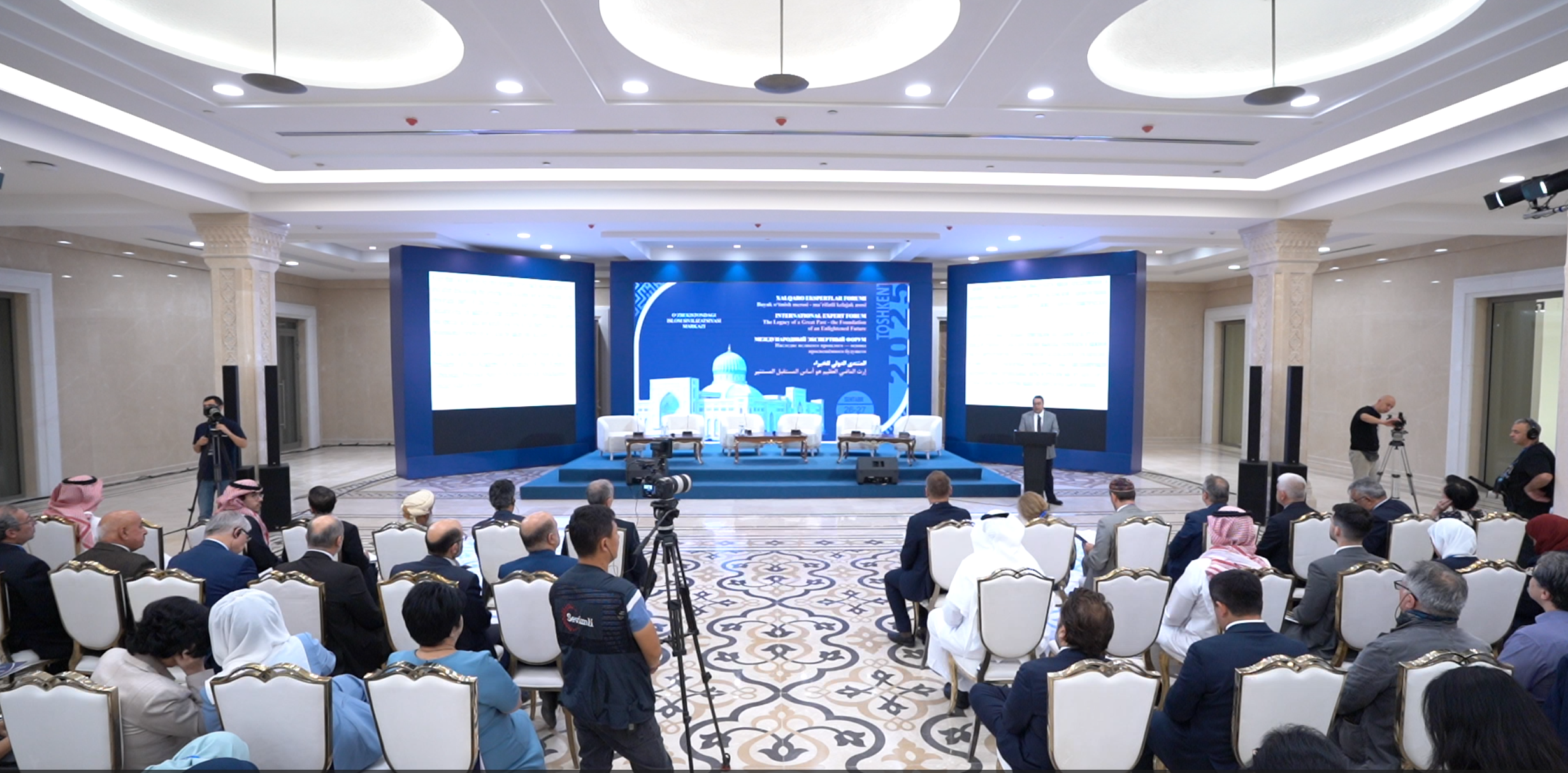A woman who united knowledge, love, and politics
🔴Mother of Kings, Patron of Knowledge

The 16th-century miniature created in the Bukhara school a rare portrait of Hamida Banu is still revered today as a symbol of refined taste and spirituality in Islamic art.
The artwork beautifully portrays not only the outward appearance but also the inner world of Hamida Banu Begum, the wife of Emperor Humayun and the mother of the great Emperor Akbar. Her fair face, henna-decorated hands, and Turkic-Indian ornaments make her an emblem of intercultural and interethnic harmony.
Hamida Banu left a profound mark on history not merely as a royal consort, but as a patron of knowledge and enlightenment. She was multilingual, collected manuscripts, and founded a library where calligraphers and painters worked. Her court became an intellectual center where discussions on science, philosophy, and poetry flourished.
It was under her initiative that Humayun’s tomb was built in Delhi a construction that laid the foundation for a new phase of Islamic architecture in India. She invited master builders from Khorasan and Shiraz, merging Turkic and Indian artistic traditions.
During Humayun’s years of exile, Hamida Banu never abandoned him she remained his advisor, companion, and pillar of strength. Later, under Akbar’s reign, she continued to play an influential role in court politics.
Hamida Banu Begum’s humanist worldview and devotion to enlightenment deeply influenced Baburid culture. Today, her name remains synonymous with educated women, enlightened mothers, and patrons of the arts.
Background: Hamida Banu (1527–1604) was the younger wife of the second Baburid emperor, Humayun, and the mother of his son and successor, the third Baburid emperor, Akbar. She was one of the most educated women of her time in India, fluent in several languages. A passionate admirer of the art of the book, she owned a magnificent library where masters of manuscript illumination worked on intricate designs, miniatures, and new volumes. She was deeply devoted to her husband, accompanying him on his travels, even during his years of exile. During Akbar’s reign, she occasionally took part in political matters as well.
After Humayun’s defeat by Sher Shah Suri, he fled Delhi and lived in exile in Sindh. The poet-princess Gulbadan Begum, Babur’s daughter, mentions in her Humayun-nama that Hamida was frequently seen at the court of Hindal. It was during this time that Humayun fell in love with her. According to Humayun-nama, when Hamida heard of the prince’s intention to marry her, she replied, “I will not marry a man whose throne and rank I cannot reach, but one whose collar I can grasp whenever I wish.” Only through the mediation of Princess Dildar Begum did her parents consent to marry her to the wandering prince. Reluctantly, Hamida agreed to the marriage.
Initially, as the Humayun-nama records, Hamida was somewhat distant toward her husband, but later grew to love him deeply and remained faithful to him all her life. When Humayun sought refuge from his rival Sher Shah and spent time in the court of Shah Tahmasp of Iran, the royal couple was received with great honor largely because Hamida Banu was a descendant of the famous Sufi Shaykh Ahmad Jami. Even during the years of hardship and exile at the Safavid court, she remained steadfastly by her husband’s side.
Hamida bore Humayun one son and two daughters, both of whom died in infancy. After Sher Shah’s death, Humayun regained control of his empire in 1554 and ruled for nearly two years. In 1556, following a tragic accident, Humayun passed away, leaving their 14-year-old son Akbar to ascend the throne. Hamida remained by her son’s side, guiding him until he reached maturity and assisting in state affairs. Even after Akbar came of age, she continued to wield considerable influence in the royal court and governance.
Her wisdom and tact also helped resolve serious conflicts between Akbar and his eldest son and heir, Salim (later Jahangir). Hamida Banu paid special attention to the education and upbringing of her grandchildren, including Prince Jahangir, whose rise to power she significantly supported. In the royal chronicles commissioned by Akbar and Jahangir, her name is mentioned with the honorific title Maryam Makani — “Mary of the Age,” a symbol of purity and nobility.
Her life and character are vividly depicted in Humayun-nama by her sister-in-law Gulbadan Begum, as well as in Akbar-nama and Ain-i Akbari, written during Akbar’s reign. Hamida Banu passed away on August 29, 1604, a year before her son Akbar, and nearly half a century after her husband Humayun. She was buried in Agra, beside Humayun’s tomb.
Durdona Rasulova
P/S: The article may be republished with attribution and a link to the official website of the Center for Islamic Civilization in Uzbekistan
Most read

Over 100 experts from more than 20 countries of the world are in Tashkent!

President of Serbia Aleksandar Vučić visited the Islamic Civilization Center in Uzbekistan

The Center for Islamic Civilization – a global platform leading towards enlightenment











